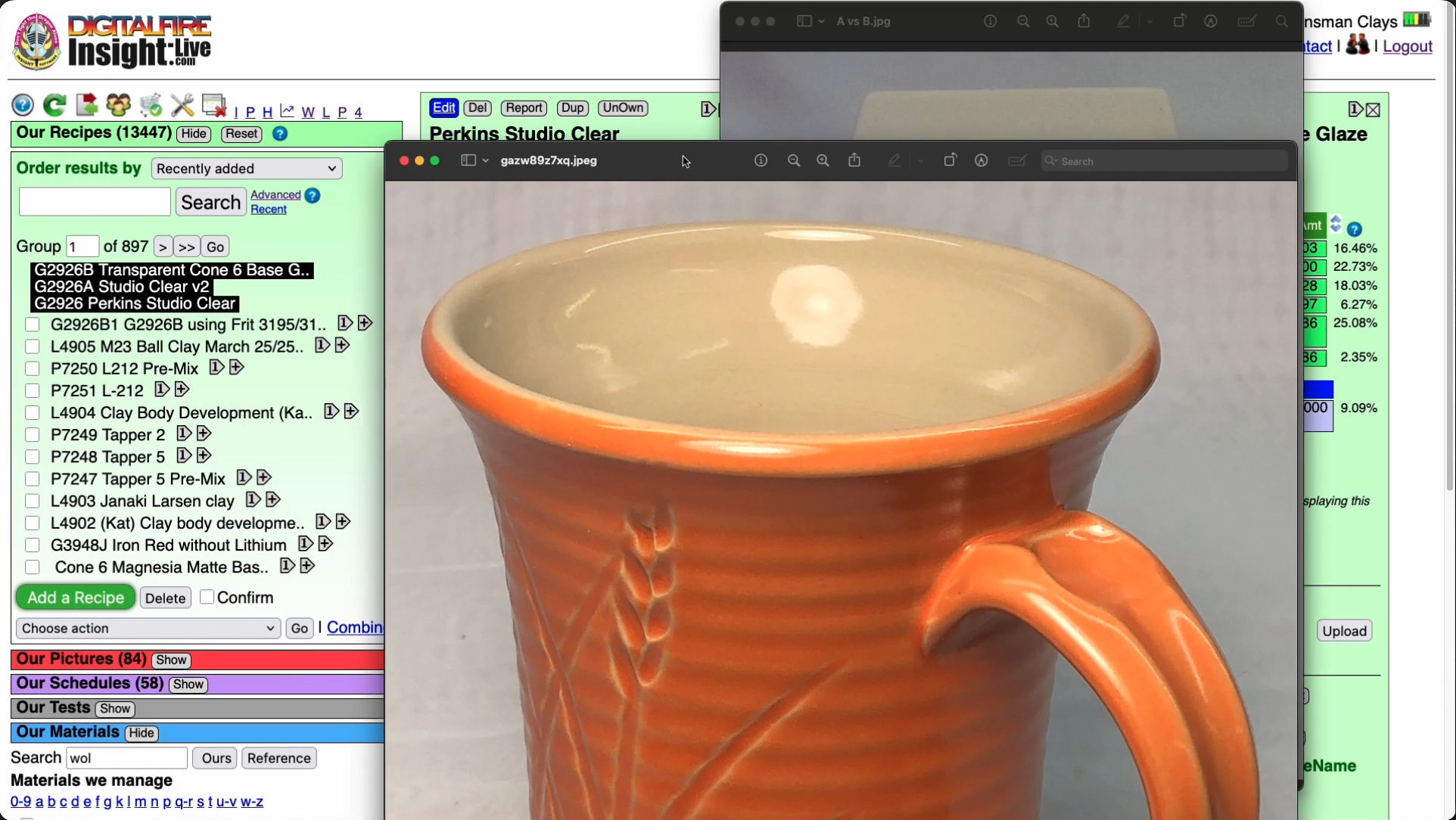| Monthly Tech-Tip | No tracking! No ads! | |
Don't look at the outside of this mug.
The inside is where the magic and potential are!
This inside glaze is G2926B (on Plainsman M340). It is capable of firing glassy smooth, crystal clear and un-crazed even on coarse stonewares. Watch the video 📹 to see the four unusual things we do to get reliable glazes like this. But the recipe is only part of getting success. Mixing it as a thixotropic slurry is another. And the firing schedule: Look closely at the two glazed tiles. The bottom one, although fired lower (cone 5.5) was slow cooled using the C5DHSC schedule - note how much smoother the glass is (the upper one was fired to cone 6 using the PLC6DS schedule).
The outside is a floating blue, GA6-C. These are a dime a dozen but a good transparent is priceless. Did you know that the outside glaze can be made from the inside one by simply adding 2:4:1 iron oxide:rutile:cobalt oxide? This glaze can be stained, opacified and variegated in an infinite number of ways. And it is adjustable (e.g. lower thermal expansion, lower or higher melting).
Videos
 |
How I Developed the G2926B Cone 6 Transparent Base Glaze
How I found a pottery glaze recipe on Facebook, substituted a frit for the Gerstley Borate (using glaze chemistry), compared using a melt flow tester, added as much extra SiO2 as it would tolerate, and got a durable and easy-to-use cone 6 clear. |
Links
| Recipes |
G2926B - Cone 6 Whiteware/Porcelain transparent glaze
A base transparent glaze recipe created by Tony Hansen, it fires high gloss and ultra clear with low melt mobility. |
Got a Question?
Buy me a coffee and we can talk

https://digitalfire.com, All Rights Reserved
Privacy Policy

